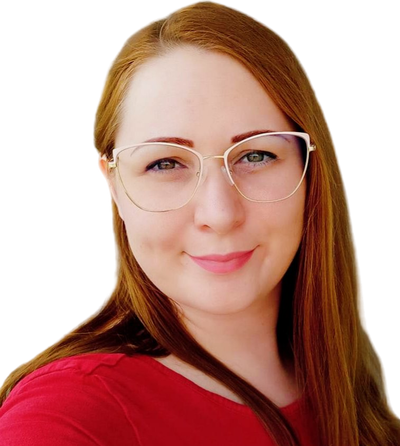CRANIOSACRAL THERAPY
Craniosacral therapy is a manual therapy performed with gentle touches (pressure, lifting, pulling, following), in which, by treating different areas of the body, the central nervous system, including the craniosacral system, is used to initiate self-correction processes, and the therapeutic processes of areas that are no longer suitable for this we can start it.The method was developed during scientific research in the mid-1970s by American osteopathic physician Dr. John Upledger.In various compositions, cranio- means skull, and sacrum means sacrum. The craniosacral system is made up of two factors: on the one hand, the complex membrane system stretching between the skull and the sacrum (the dura mater: hard brain membrane), which surrounds the brain and spinal cord, and on the other hand, the fluid that flows through it (the cerebrospinal fluid). .This membrane system of the central nervous system maintains the physiological environment necessary for the balanced functioning of the brain and spinal cord (protection against mechanical and thermal fluctuations, detoxification, nutrition, information transfer hormones). If the individual suffers some kind of injury (due to physical trauma, emotional trauma or prolonged stress, mental influences), the membrane system itself reacts with physical (micro) changes (thanks to mechanical or neural connections). These micro changes are usually compensated for a while thanks to the flexibility of the nervous system. After a while, however, the nervous system "gets tired" and the micro changes cause symptoms: physical (psychosomatic or "somatic"), emotional (somatopsychic or "psychic") and mental problems, regardless of the nature of the original trauma. The nature of the symptoms is more related to the individual's personality, habitus, and reaction tendency.Craniosacral therapy treats and heals this physical change (micro-changes of the membrane), which appears as the main cause of the current problem or disease within the body, regardless of whether the original cause of the problem was on a physical or spiritual level.
It is important to understand that when someone says that craniosacral therapy is "good for everything", it is not an "ezo-humbug", it is based on the scientifically established fact that the craniosacral system responds to all traumatic influences in our life as a holistic memory , and can be injured in the process, regardless of whether the given impact is of physical or mental origin. Its changes and injuries cause holistic problems in the body.Fortunately, the changes can be corrected without any major surgery, in street clothes, during the treatment that works with delicate touches, in which the membrane system itself is treated by micro-manipulation of the bony connections of the membrane system.Craniosacral treatment, as indicated earlier, heals the craniosacral system on the one hand, and got its name from this. The essence and key of the therapy are determined by the properties of the membrane system (its function of providing a physiological environment and the nature of a holistic memory). In our body, however, a system of membranes surrounds, protects and nourishes not only the central nervous system, but also all the organs, the various tissues and fibers within the organs, in the same way as a tangerine is surrounded by its thick skin, then the segments are surrounded by the thick membranes, and finally the fibers the thin membranes. These membranes, found everywhere in the body, have the same properties as the meninges, only they also border and cover other (non-nervous) system organs. The name of this membrane system is: fascia (pronounced: fascia). Fascia is like a web in the body that is continuous. Some of its areas are in continuous connection with each other and with the craniosacral system, so changes appearing at one point can cause changes and dysfunctions at another point or along an entire body direction. This is similar to when damaging a spider's web at one point affects the entire web (tearing it, twisting it, tearing it elsewhere, etc.). On the other hand, craniosacral therapy also treats changes in this fascia system based on the same principles on which the treatment of the craniosacral system is based.
The specialist performing craniosacral therapy examines the rhythm of the craniosacral system by palpation (using tactile sensation), which is called the 3rd rhythm of the body in addition to the rhythm of the heart and breathing, and can be traced back to the intermittent production of the fluid flowing in the system. On the other hand, it examines the condition of the fascia.The craniosacral therapist treats the dura itself indirectly and the fascia directly with the help of the bony connections of the craniosacral membrane system with an effort of only 5 g.Indications:Locomotor system diseases: Spine diseases, scoliosis, Dental and jaw joint problems, Chronic neck, back and waist pain, AccidentsOther organ system diseases: Tinnitus, otitis media, Hormonal disorders, diabetes, menstrual disorders, Respiratory diseases, asthma, chronic sinusitis, Cardiovascular diseases, high blood pressure, Digestive disorders, Post-operative conditions, Headache, migraine, dizzinessPhysical symptoms for which conventional medicine cannot find a diagnosis and/or cure:Physical pains in different areas of the body (diffuse or focused)Accidents, strange symptoms after surgery, pain despite the fact that the specialist medicine declares the patient curedAfter recovering from infections and poisonings, everything is not as it used to beMental illnesses: Sleep disorders, chronic fatigue, stress, depression, childbirth trauma, learning difficulties, addiction, behavioral disorders, eating disorders. Craniosacral therapy is not indicated for the following diseases:Manic-depressive psychosisSchizophrenia
